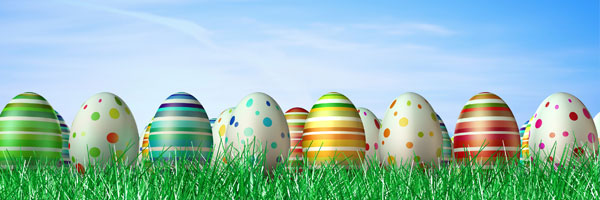Easter Lesson Plan Grades 4-6

Enjoy this Easter lesson plan, suitable for children in grades 4–6.
Objectives
Children will
- explain what Easter traditions, such as Easter eggs, have to do with the Resurrection of Christ.
- retell the story of when Jesus appeared to the disciples in the locked room in Luke 24:36–45.
- think of ways they can spread the message of peace and hope found in the Resurrection.
Materials
Student Handout A (Jesus After His Resurrection)
Student Handout B (Prayer Service)
Student Handout C (The Message of Easter)
Student Handout D (Word Search)
Family Handout (The Days Following Easter)
a hard-boiled egg
paper
envelopes
Centering
Begin by asking how the children’s families celebrate Easter. Say: What are some ways your family celebrates Easter? Do you eat special foods? Do you have special traditions? (Answers may vary.) Then ask: How is the church decorated for Easter? (There are a lot of flowers and colorful decorations.) Hold up a hard-boiled egg. Ask: What do we do with eggs at Easter? (Color them different colors, hide them, and search for them.) What do eggs have to do with Easter? (Accept all reasonable responses.) Then explain that Easter is a time to celebrate new life and eggs contain new life. Tell the children that the young chick emerging from the egg is a symbol of the Resurrection and our emergence to new life. Say: Easter takes place in the spring when new life comes to nature. At Easter, as the days grow longer, we light candles and proclaim Jesus as the light of the world. During the Easter season, we remember that Jesus died on the cross for us, rose from the dead, and gave us the gift of peace.
Sharing
Ask the children to read Luke 24:36–45. You may want to play some quiet music while they read. Then ask for volunteers to summarize the story. Ask: Why do you think the doors were locked? (Jesus had been killed by the authorities. The disciples were not sure if someone might want to kill them.) How do the disciples react when Jesus appears? (They are startled. They don’t know how to respond to Jesus.) What does Jesus say to his disciples? (Peace be with you.) Why do you think Jesus asks them for food? (He wanted them to see that he was really alive. He wanted them to know that even though he was different now, he was not a ghost.)
Remind the children that when Jesus offered his peace to the apostles, he used the Hebrew word shalom. Write on the board the words for peace in different languages. Then invite children to make a poster reflecting the different ways to say peace along with symbols of peace such as doves and clasped hands. Title the poster “Peace be with you.”
| Language | Peace | Language | Peace |
| Dutch | Vrede | Lakota | Wolakota |
| Egyptian | Hetep | Lao | Santiphap |
| French | Paix | Latin | Pax |
| German | der friede | Spanish | Paz |
| Greek | Irini | Swahili | Amani |
| Hebrew | Shalom | Swedish | Fred |
| Hindi | Shanti | Tagalog | Kapayapaan |
| Italian | Pace | Vietnamese | Hoa Binh |
| Japanese | Heiwa | Zulu | Ukuthula |
Pass out Student Handout A, Jesus After His Resurrection, and have the children complete it as a way to review the events of the Resurrection.
Acting
Pick a leader and a reader for the prayer service. Distribute Student Handout B, Prayer Service. Then proceed with the prayer service, pausing before and after the Scripture reading. Have the children pray the Lord’s Prayer slowly or you may have them sing it instead.
When the prayer service is finished, pass out paper and envelopes. Then say: Jesus brought peace to us through the Resurrection. He gives us hope in the knowledge that God is with us even in difficult times. Do you know someone who needs to hear this message? Have each child write a letter to someone who needs to hear a message of hope. Tell them they don’t have to tell you who they want to write to. Help them decide on one person who might need cheering up, such as someone who is sick, who has lost a loved one, or who has been through a difficult time. It could be someone they know from the parish or from the news. Encourage them to include phrases such as “Peace be with you!” or “Rejoice!”
Remind the children that Easter is the most joyful time of the liturgical year. It is the time we celebrate the Resurrection and the peace and healing it brings us. Have them make a list of ways that they can celebrate the Resurrection of Jesus with their family and parish community.
Family Component
Print out the handout The Days Following Easter and have the children take it home to their families.
Enriching the Faith Experience
Use Student Handout C, The Message of Easter, and/or Student Handout D, Word Search, to engage the children in fun activities while continuing the discussion about the experience of Easter.

